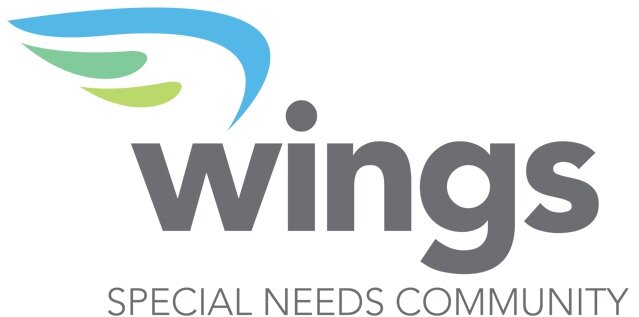-
WHY IS WINGS BUILDING A NEW CAMPUS?
The mission of Wings is to provide social, emotional, vocational and residential support and guidance for our members and their families. Until now, residential has only been a dream of Wings and its founders. Last year, Wings was gifted 75 acres of land which allowed the organization to create a master plan for a new, permanent campus and residential community.—————————————————————————————————————————————————————
WILL THE NEW CAMPUS BE ABLE TO ACCOMMODATE MORE MEMBERS? HOW MANY?
The master plan will ultimately be able to accommodate significant growth in our day program -- up from 62 to 200. Our residential master plan will provide 15 homes for 120 members. Our first phase of building the permanent campus and residential community will allow for growth in our day program up to 100 and one home for eight members.—————————————————————————————————————————————————————
HOW MUCH WILL IT COST TO BUILD?
The first phase will cost $18M which includes program building, community building, one home -- representing approximately 40K square feet -- site work and infrastructure, operations support and a maintenance reserve.—————————————————————————————————————————————————————
WILL THE DAY PROGRAM MOVE TO THE NEW LOCATION?
Yes, the day program will relocate to the new campus and will have the space to grow. The aim is to create a vibrant, thriving community that encourages growth in all aspects of life.—————————————————————————————————————————————————————
WHAT WILL HAPPEN TO THE CURRENT LOCATION?
The current, 7,500 square foot location is a rented space that Wings will leave behind eventually. Rent savings of $100K annually will be repurposed toward the increased operations of Wings’ new campus.—————————————————————————————————————————————————————
HOW WILL THE NEW CAMPUS IMPACT DAY MEMBER TUITION?
The day program tuition is not anticipated to change at all beyond the regularly planned 3% increases every other year to keep up with inflation. Many of our families (about 20%) are on reduced tuition. In fact, the full tuition charged to member families represents 17% of the actual cost to deliver service.—————————————————————————————————————————————————————
WHERE DO ADULTS WITH INTELLECTUAL AND DEVELOPMENTAL DISABILITIES TYPICALLY LIVE?
Typically, adults with intellectual disabilities live with parents or family members; however, many are now outliving their parents. In those instances, adults with intellectual disabilities live in Section 8 Housing, Group Homes / Supportive Housing, Assisted Living Facilities, Skilled Nursing Facilities (Nursing Homes) or perhaps the family has a Special Needs Trust that owns a private home / pays rent and hires 24/7 care.—————————————————————————————————————————————————————
HOW MUCH IS WINGS RAISING IN THE CAMPAIGN?
To build Phase I -- Wings is raising $18M. We have a generous $3M challenge gift that requires us to secure $8.5M by April 2023 making the total committed $11.5M. If we can do this, we can begin construction of the Program/Education Building and the Entry.—————————————————————————————————————————————————————WHEN DO YOU PLAN TO START CONSTRUCTION AND HOW LONG IS THE BUILD PROCESS?
Our aim is April 2023 to begin construction and open the campus within two years.—————————————————————————————————————————————————————
ARE OTHER SOURCES OF FUNDING BEING PURSUED, BEYOND PHILANTHROPY?
Yes, Wings is actively pursuing New Market Tax Credits and funding through the Oklahoma Housing Finance Authority. These are early stage discussions, but we are working to utilize all available funding streams to launch the new community.—————————————————————————————————————————————————————
CAN PLEDGES BE MADE TO SUPPORT THE CAMPAIGN?
Yes, gifts can be pledged over time -- preferably three years, but the Board will allow up to five years. To lessen the impact of interest payments on bridge financing for the project, Wings is asking donors to consider substantial pledge payments in years 1 and 2, rather than simply dividing the payments evenly.

